Exploring the Depths of Vedic Knowledge: A Journey Through Ancient Indian Education
India, often referred to as Vedabhoomi, has a rich history of advanced education systems that predate many modern concepts. This blog delves into the intricate framework of ancient Indian scriptures, exploring how they shaped knowledge across various fields and continue to influence education today.
Table of Contents
- Introduction to Vedabhoomi
- The Four Vedas Explained
- Agamas: The Rule Books of Temple Construction
- Siddhantam: Principles in Science and Technology
- The Importance of Samskritam in Understanding Vedic Knowledge
- The Legacy of Aryabhatta and His Contributions
- Conclusion: The Need to Rediscover Ancient Indian Knowledge
- Frequently Asked Questions
Introduction to Vedabhoomi
Vedabhoomi, meaning “the land of knowledge,” is a term that encapsulates India’s long-standing legacy of advanced education. This concept is deeply rooted in the Vedic culture, which has significantly influenced various fields of knowledge. The educational systems of ancient India were not only sophisticated but also holistic, encompassing philosophy, science, arts, and spirituality.
In ancient times, India attracted scholars and students from various parts of the world, including Europe and China. These travelers sought knowledge from Indian sages and scholars, highlighting the reputation of India as a center of learning. The education system was not merely about rote learning; it emphasized critical thinking, debate, and the pursuit of wisdom.
Historical Context of Indian Education
The roots of Indian education can be traced back to the Vedic period, which dates back thousands of years. This era marked the beginning of a structured approach to learning, where knowledge was transmitted orally and later inscribed on palm leaves and manuscripts. Education was primarily conducted in Gurukuls, where students lived with their gurus, learning through direct interaction and practical experiences.
The Indian education system evolved through various dynasties, each contributing to its richness and diversity. The Nalanda and Takshashila universities, known for their vast libraries and learned scholars, were among the earliest centers of higher education in the world. These institutions attracted students from different cultures and regions, facilitating an exchange of ideas and knowledge.

The Advanced Education System of Ancient India
Ancient Indian education was characterized by a comprehensive curriculum that included subjects like mathematics, astronomy, medicine, and philosophy. The system integrated both practical knowledge and theoretical understanding, enabling students to apply what they learned in real-life situations.
One of the remarkable features of this system was its inclusivity; education was accessible to various social classes. While the Brahmins primarily dominated the scholarly pursuits, there were provisions for Kshatriyas, Vaishyas, and even Shudras to receive education, depending on their interests and capabilities.

Sources of Vedic Education
The preservation of Vedic education has been primarily attributed to three sources: inscriptions, manuscripts, and oral transmission. Ancient temples served as repositories of knowledge, where inscriptions detailing various philosophical and scientific concepts were carved into stone.
Manuscripts created by sages and scholars played a crucial role in documenting knowledge. These texts were meticulously copied and preserved across generations, ensuring the continuity of education. Oral transmission, characterized by the guru-shishya (teacher-student) relationship, was equally important, as it allowed for personalized learning and the passing down of intricate knowledge.
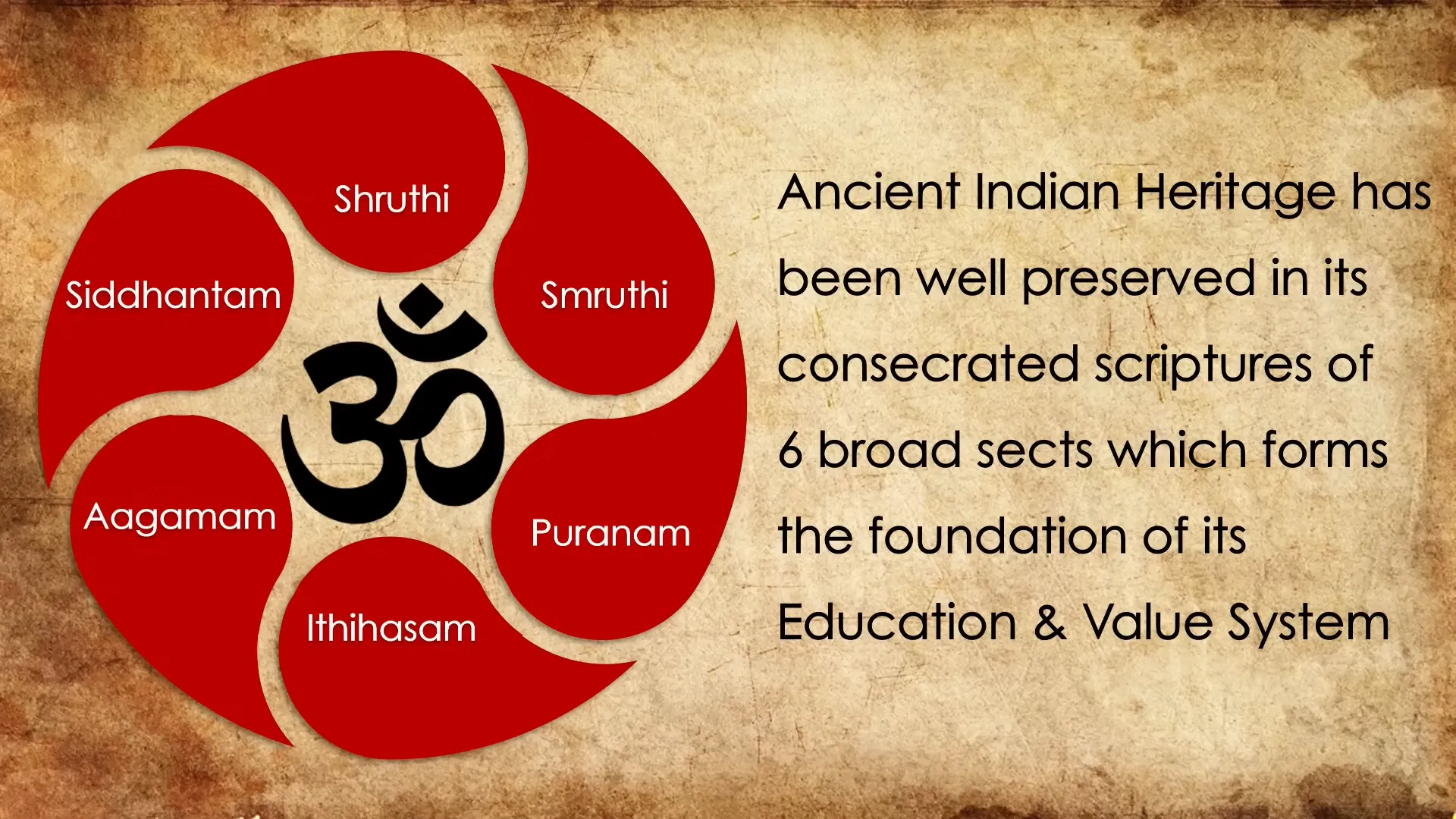
Categories of Indian Scriptures
The knowledge system of ancient India is categorized into six broad categories of scriptures. These categories encompass a vast array of subjects, providing a comprehensive framework for education:
- Shruti: The foundational texts, including the Vedas, which are considered the ultimate authority in spiritual knowledge.
- Smriti: Texts authored by sages that interpret and elaborate on the teachings of Shruti.
- Puranas: Historical documents that narrate the creation and evolution of the cosmos.
- Itihasa: Epic narratives that shape the ethos and values of Indian society.
- Agamas: Treatises on temple construction and rituals, detailing the architectural principles.
- Siddhantam: A collection of principles across various fields of science and technology.
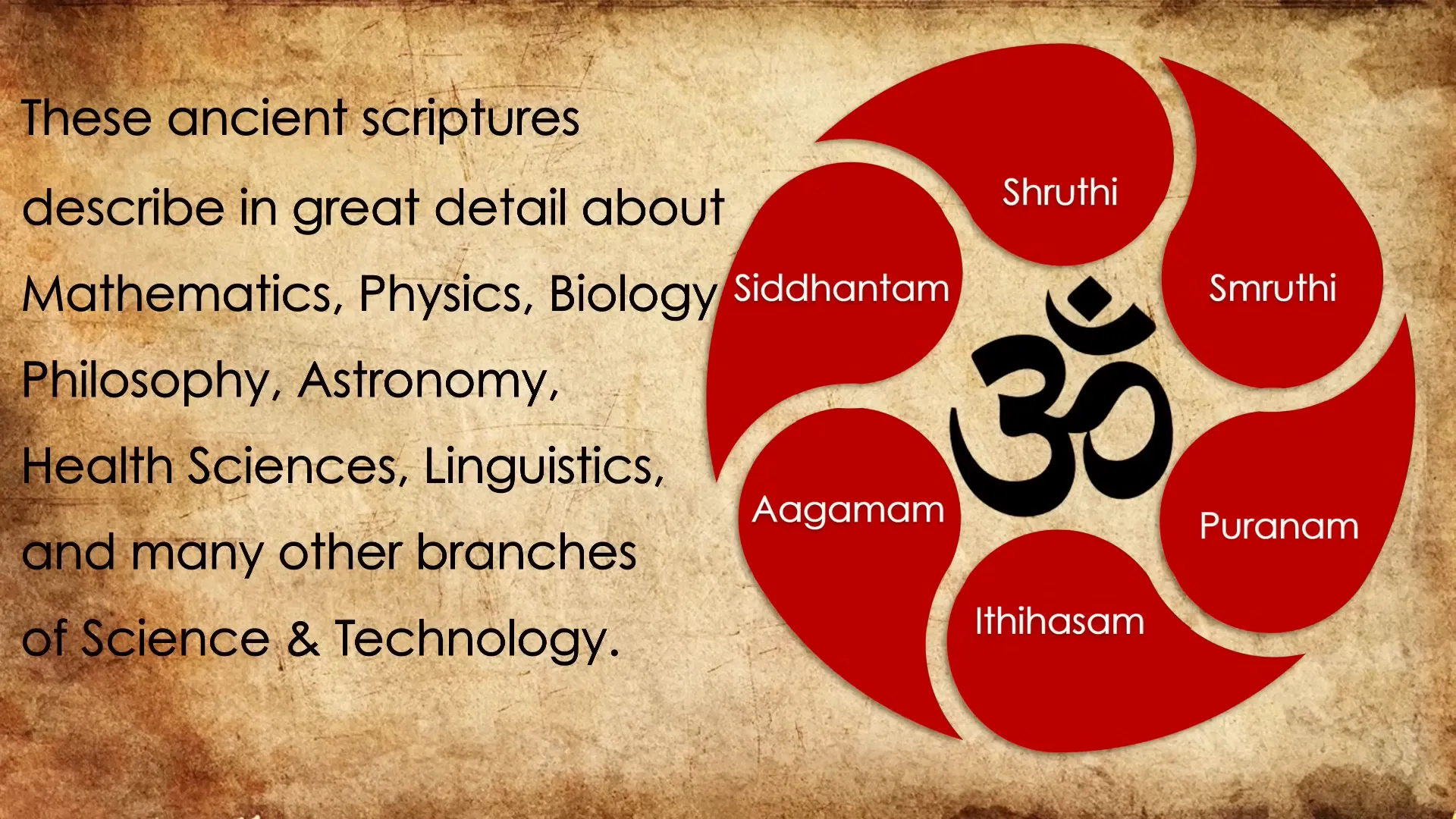
Understanding Shruti: The Vedas
Shruti, meaning “that which is heard,” refers to the Vedas, which are the oldest sacred texts of Hinduism. There are four primary Vedas: Rigveda, Samaveda, Yajurveda, and Atharvaveda. Each Veda serves a distinct purpose and contributes to the holistic understanding of existence.
The Rigveda is a collection of hymns that praise the elements of nature and the cosmos. The Samaveda consists of melodies and chants that enhance the ritualistic aspects of worship. The Yajurveda provides instructions for performing sacrifices, while the Atharvaveda encompasses various practical knowledge, including medicine and magic.
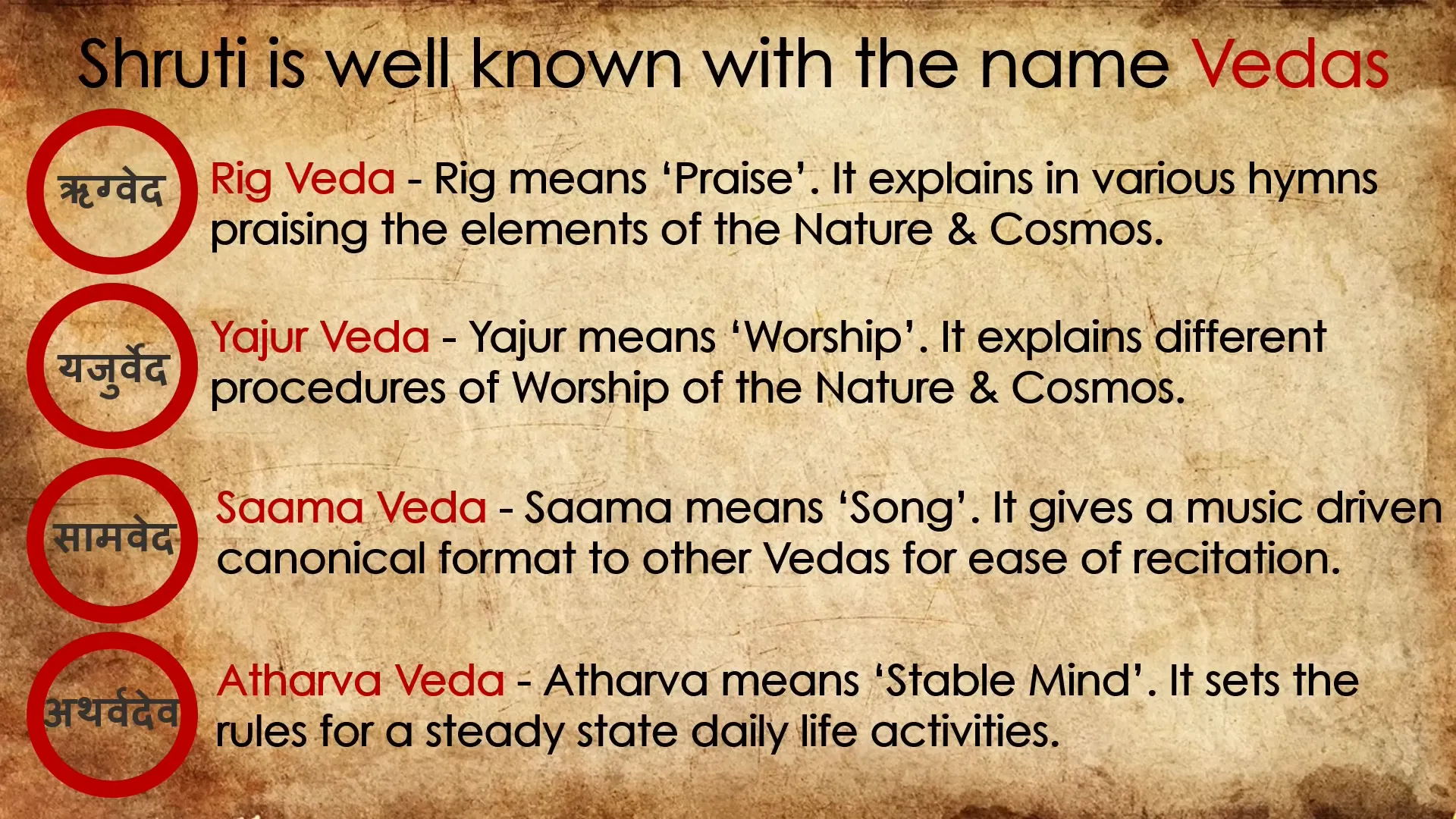
Each of the Vedas is divided into four parts: Samhita (hymns), Brahmana (rituals), Aranyaka (theological discussions), and Upanishads (philosophical teachings). This structure allows for a comprehensive exploration of both the practical and philosophical dimensions of life, making the Vedas a cornerstone of the Indian education system.
The Four Vedas Explained
The Vedas are the cornerstone of Indian spiritual and philosophical thought, comprising four primary texts: Rigveda, Samaveda, Yajurveda, and Atharvaveda. Each Veda serves a unique purpose and embodies a different aspect of knowledge.
The Rigveda, often considered the oldest, is a collection of hymns that celebrate the natural elements and the cosmos. It consists of rich poetic verses that express gratitude and reverence toward the divine forces.
The Samaveda is known as the “Veda of melodies.” It transforms the hymns of the Rigveda into musical compositions, facilitating their recitation during rituals. This Veda emphasizes the melodic aspect of worship, making it essential for ceremonial practices.
Yajurveda focuses on the procedures of worship and sacrifices. It provides detailed instructions on how to perform rituals effectively, ensuring that the devotion is expressed in a structured manner.
Lastly, Atharvaveda encompasses practical knowledge, including medicine, magic, and philosophical discourse. It addresses everyday concerns and offers insights into health and well-being.
The Structure of Vedas: Internal and External Blocks
The Vedas are not merely collections of hymns but are structured into four fundamental blocks: Samhita, Brahmana, Aranyaka, and Upanishads. Each block serves a distinct purpose in understanding the Vedic knowledge system.
- Samhita: The core collection of hymns and mantras.
- Brahmana: Texts that explain the rituals and the significance behind them.
- Aranyaka: Philosophical discussions and meditative practices.
- Upanishads: The culmination of Vedic thought, focusing on metaphysics and spiritual concepts.
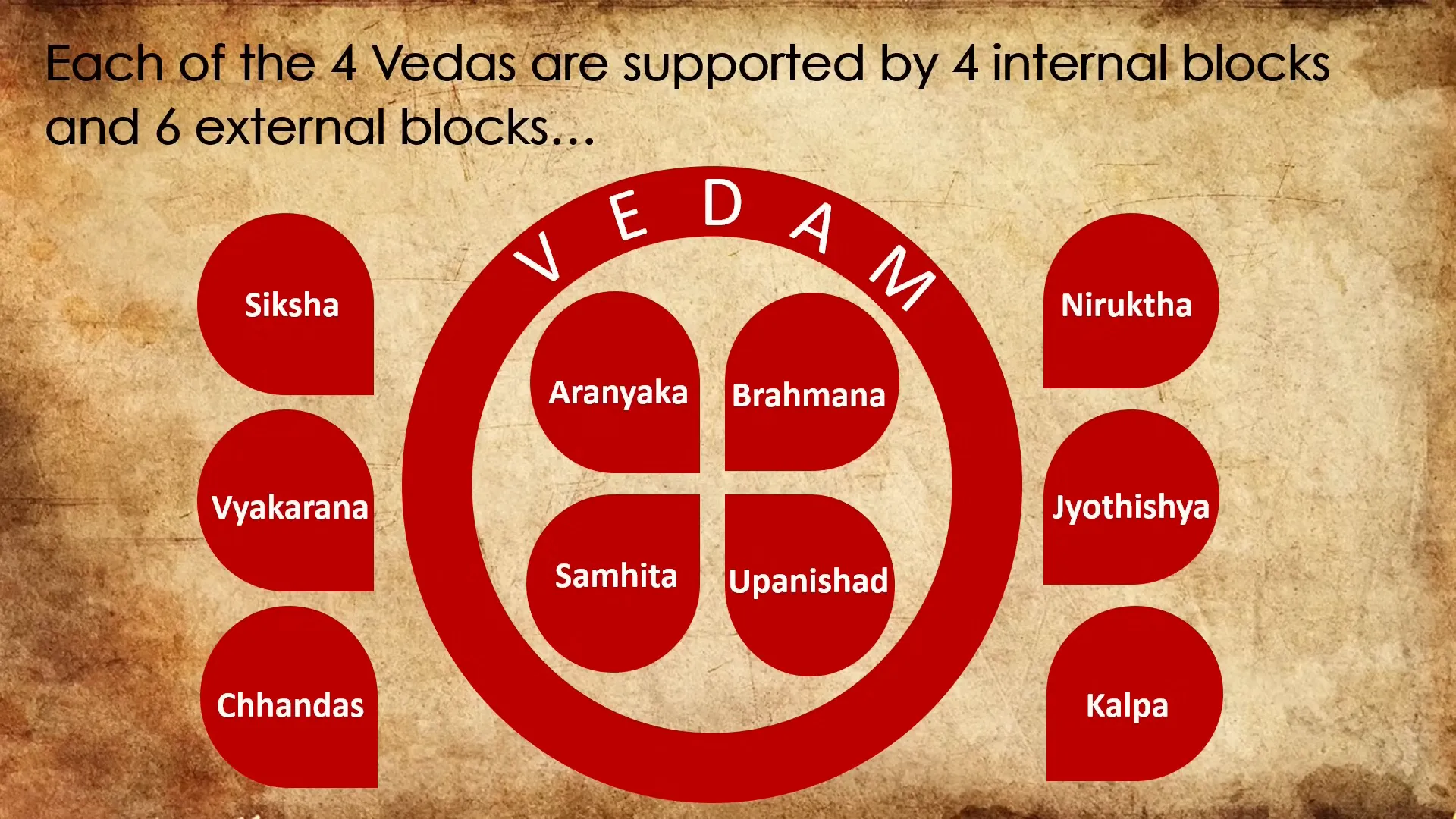
Complementing these internal blocks are six external blocks known as Vedangas. These include:
- Siksha: The study of phonetics.
- Vyakarana: The study of grammar.
- Chandah: The study of meter and rhythm.
- Nirukta: The study of etymology.
- Jyotisha: The study of astronomy.
- Kalpa: The study of rituals and procedures.
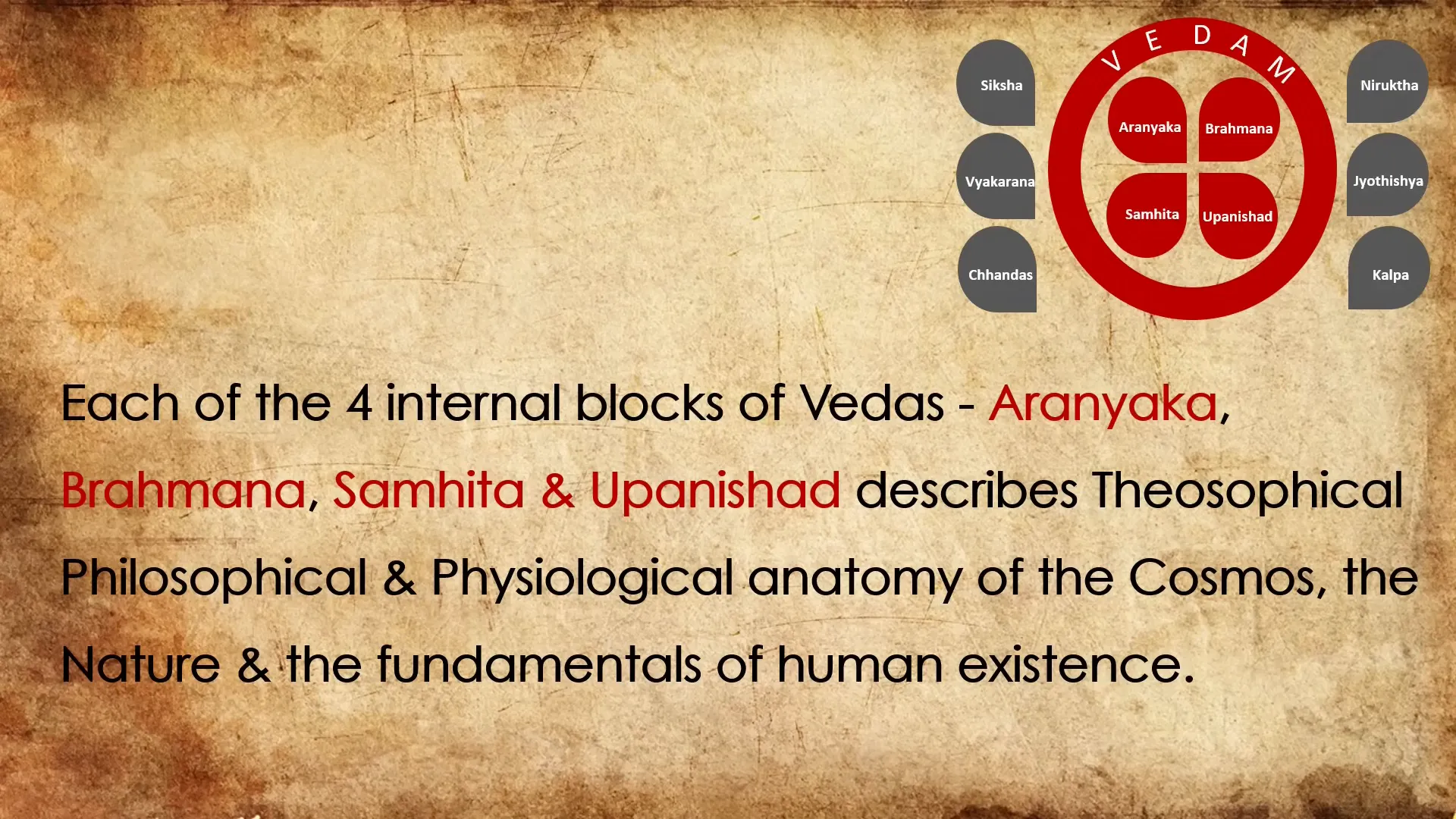
Exploring Upavedas: The Offspring of Vedas
Each of the four Vedas is associated with an Upaveda, which serves as an offspring, expanding the scope of knowledge in specific fields. The Upavedas are:
- Ayurveda: The science of life, focusing on health and well-being, derived from the Rigveda.
- Gandharva Veda: The study of music, art, and dance, associated with the Samaveda.
- Dhanurveda: The science of archery and warfare, linked to the Yajurveda.
- Arthashastra: The science of economics and governance, stemming from the Atharvaveda.
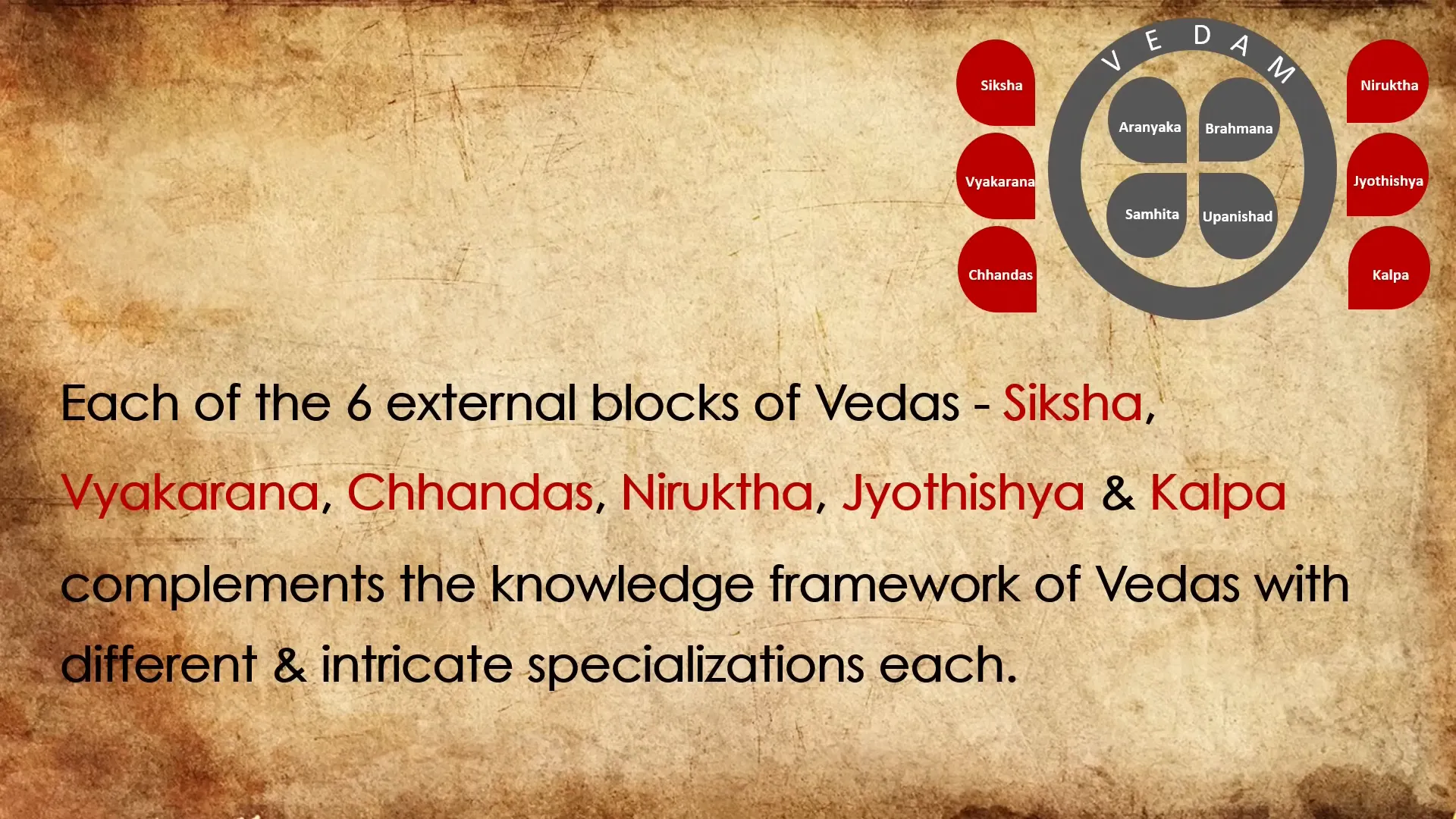
Understanding Smriti: The Writings of Sages
Smriti, meaning “that which is remembered,” comprises texts authored by sages who interpreted the Shruti. These writings are invaluable as they provide context, commentary, and practical applications of Vedic principles.
Among the 18 Smritis, prominent ones include:
- Atri Smriti
- Vishnu Smriti
- Harita Smriti
- Nashika Smriti
- Angirasa Smriti
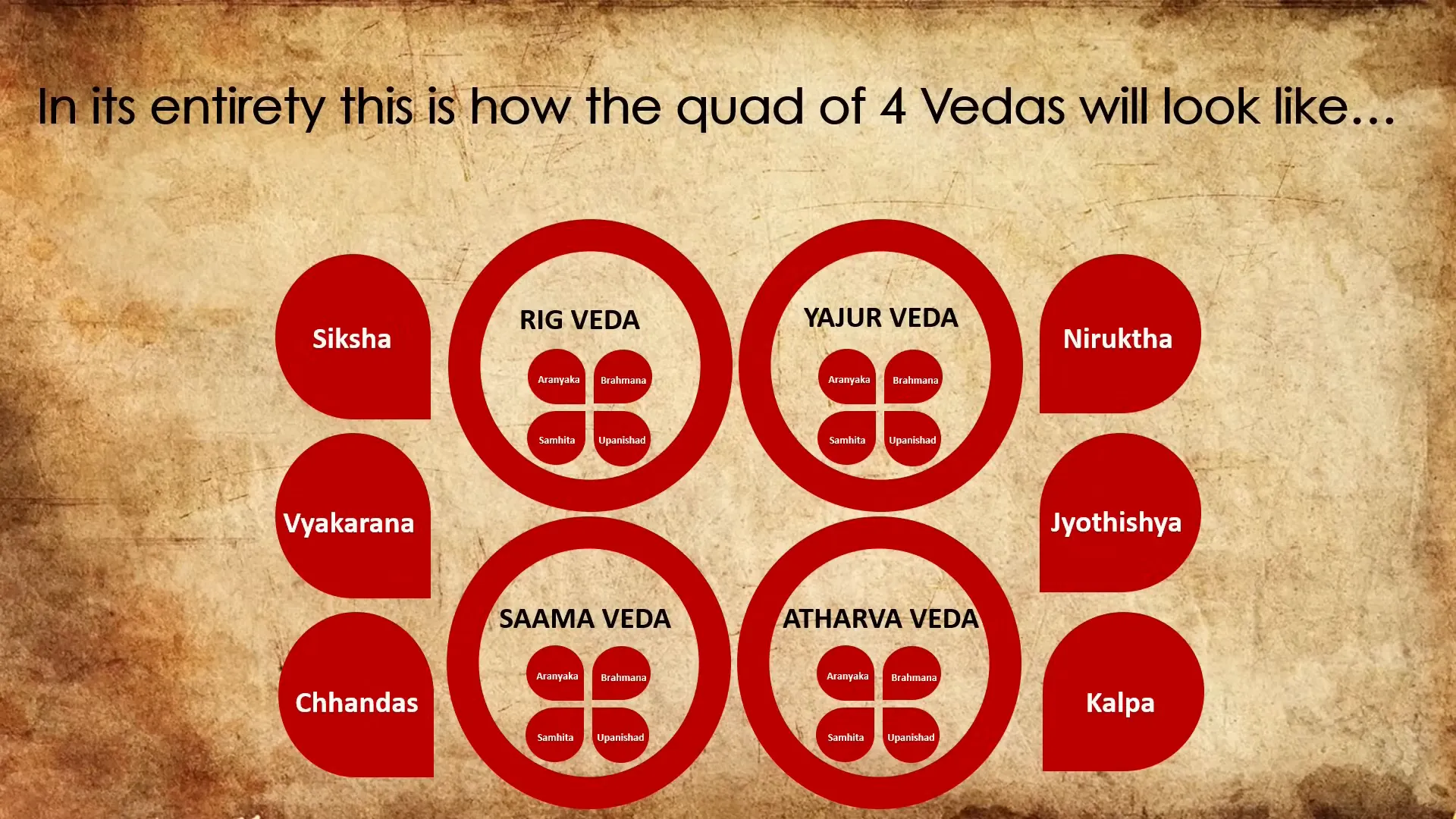
These texts cover diverse fields such as law, ethics, and philosophy, enriching the educational framework established by the Vedas.
Puranas: Historical Documents of Ancient India
Puranas are often misunderstood as mythology, but they are, in fact, historical documents that narrate the creation and evolution of the cosmos. They contain a wealth of information across ten dimensions, including:
- Sarga: Creation of the cosmos.
- Vissarga: Creation of the worlds.
- Rupti: Evolution of life.
- Raksha: Sustenance of life.
- Antarani: Measurement of time.
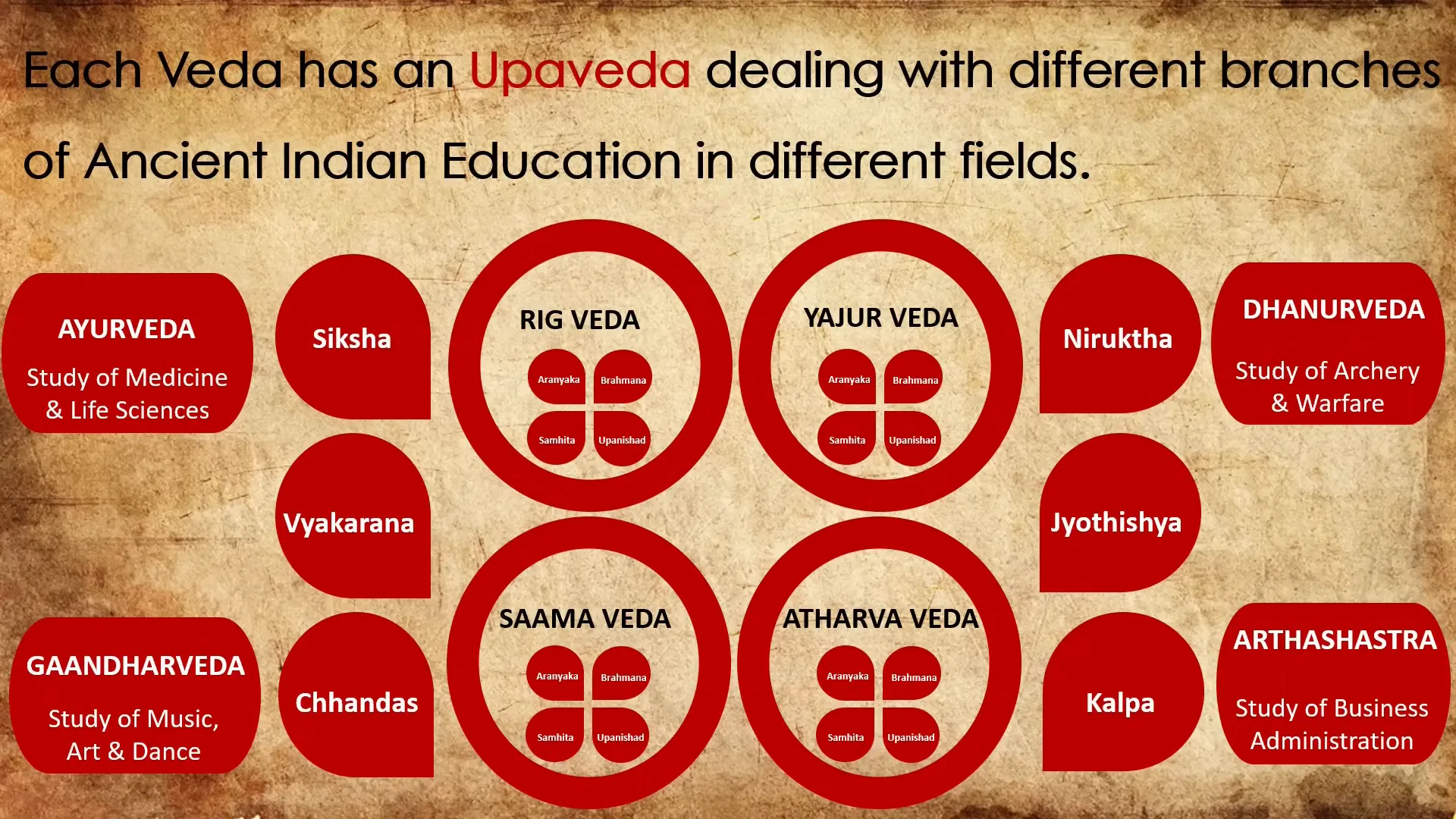
Written primarily by Sage Vyasa, the Puranas provide insights into the lineage of rulers, natural catastrophes, and the incarnations of deities, offering a comprehensive view of ancient Indian history.
The Significance of Itihasa in Shaping Indian Ethos
Itihasa, translating to “thus it happened,” consists of two major epics: the Ramayana and the Mahabharata. These texts are foundational in shaping the ethical and moral framework of Indian society.
The Ramayana narrates the life and virtues of Lord Rama, emphasizing principles such as duty, righteousness, and devotion. It serves as a guide for personal conduct and societal values.
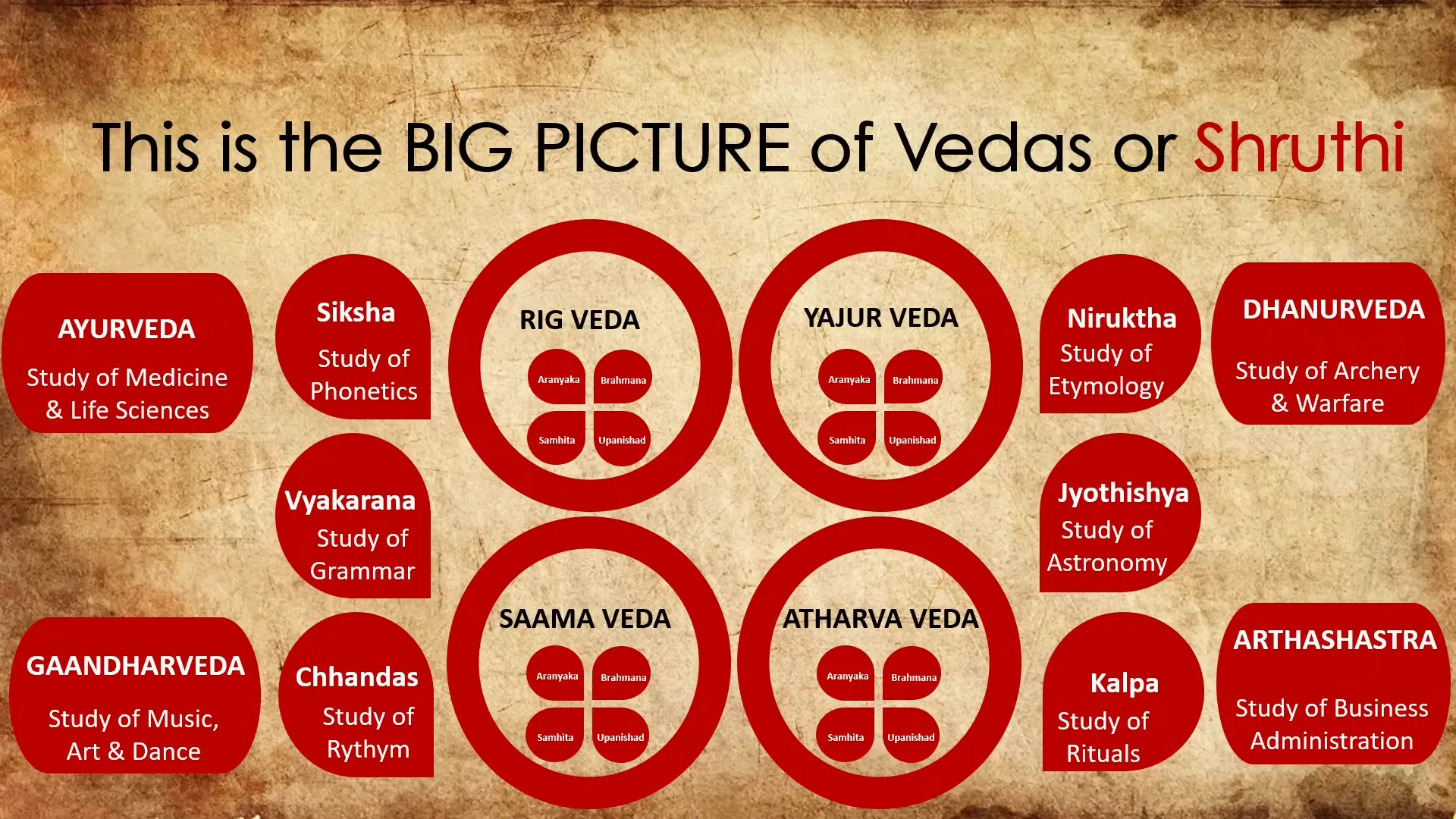
The Mahabharata, on the other hand, explores complex themes of justice, loyalty, and the human condition. The Bhagavad Gita, a part of this epic, addresses the dilemmas faced by individuals and provides profound philosophical insights.
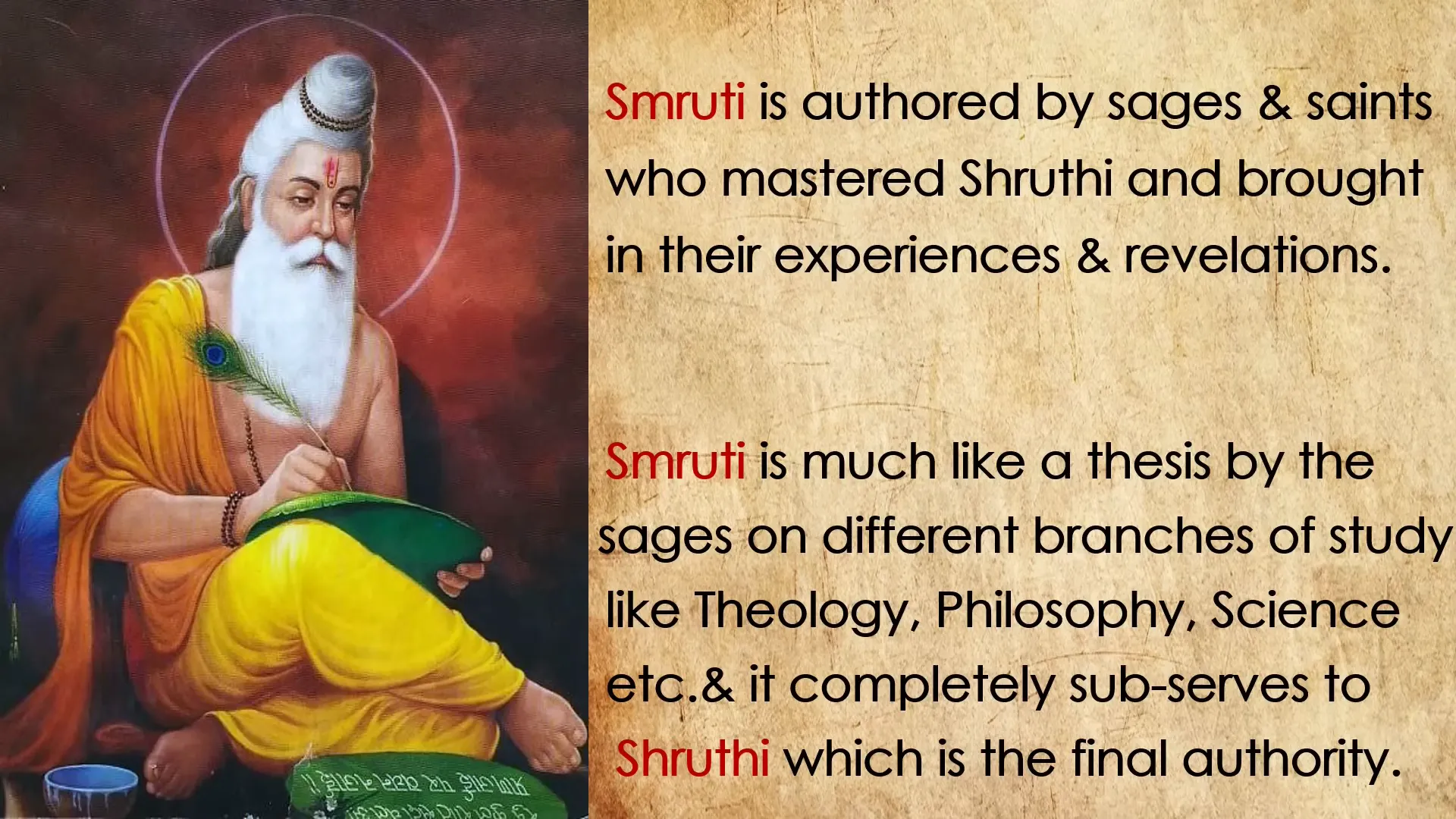
Agamas: The Rule Books of Temple Construction
Agamas are a crucial aspect of ancient Indian scriptures, providing detailed guidelines on temple construction and rituals. These texts serve as rule books that delineate the architectural principles essential for creating temples, which are not only places of worship but also embodiments of spiritual energy.
There are various types of Agamas, including:
- Shakti Agamas: Focused on the worship of the Divine Feminine, these texts elaborate on rituals and temple architecture dedicated to Shakti.
- Shiva Agamas: These texts provide insights into the worship of Lord Shiva and the rituals associated with his temples.
- Vaishnava Agamas: Dedicated to Lord Vishnu, these Agamas outline the guidelines for constructing temples and conducting rituals in his honor.
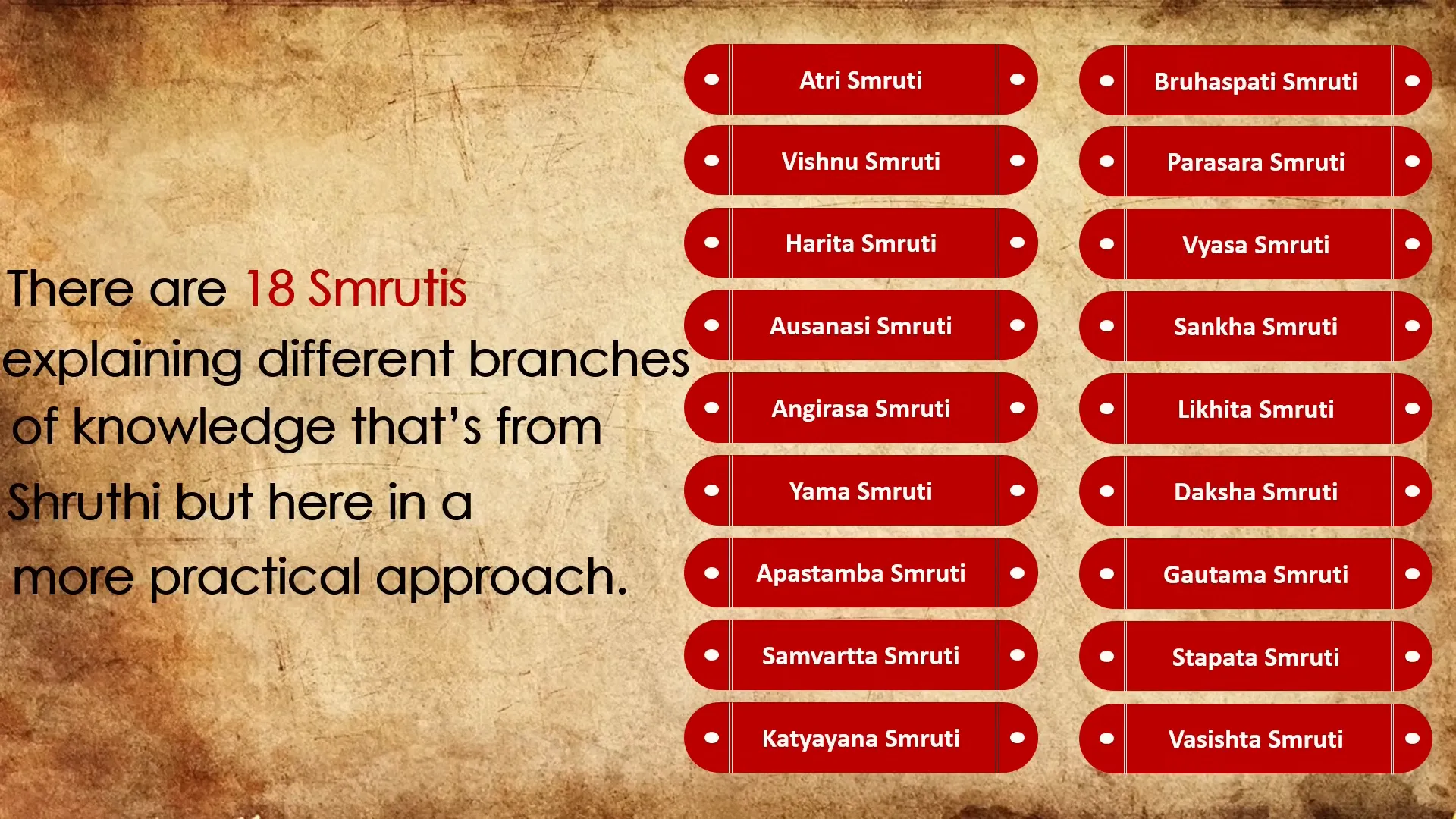
The Agamas emphasize the importance of aligning the temple’s construction with cosmic principles. This ensures that the temple acts as a conduit for divine energy, enhancing the spiritual experience for devotees. The architectural styles, proportions, and ornamentation described in these texts reflect a deep understanding of aesthetics and geometry.
For instance, the concept of Vastu Shastra, which deals with the spatial arrangement and orientation of buildings, originates from the Agamas. This ancient science combines art and architecture, creating a harmonious living environment that resonates with cosmic energies.
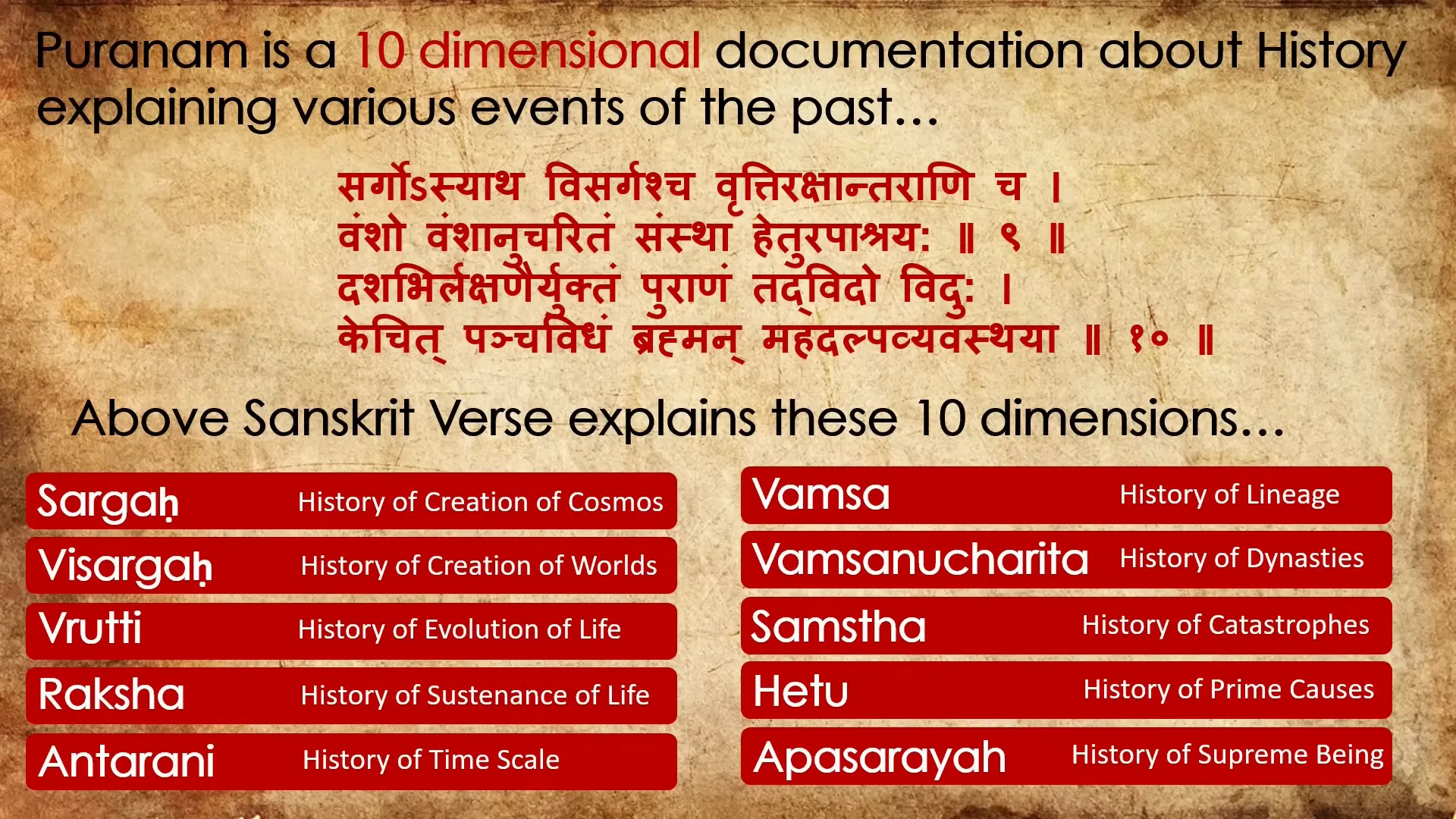
Siddhantam: Principles in Science and Technology
Siddhantam refers to the foundational principles across various fields of science and technology as articulated in ancient Indian texts. These principles are not mere theories; they encompass practical applications that have influenced various disciplines such as astronomy, mathematics, medicine, and engineering.
In astronomy, Siddhantam includes a collection of 18 treatises that explore celestial phenomena, planetary motions, and calculations related to time and space. These texts laid the groundwork for later astronomical discoveries and provided insights into the movement of celestial bodies.
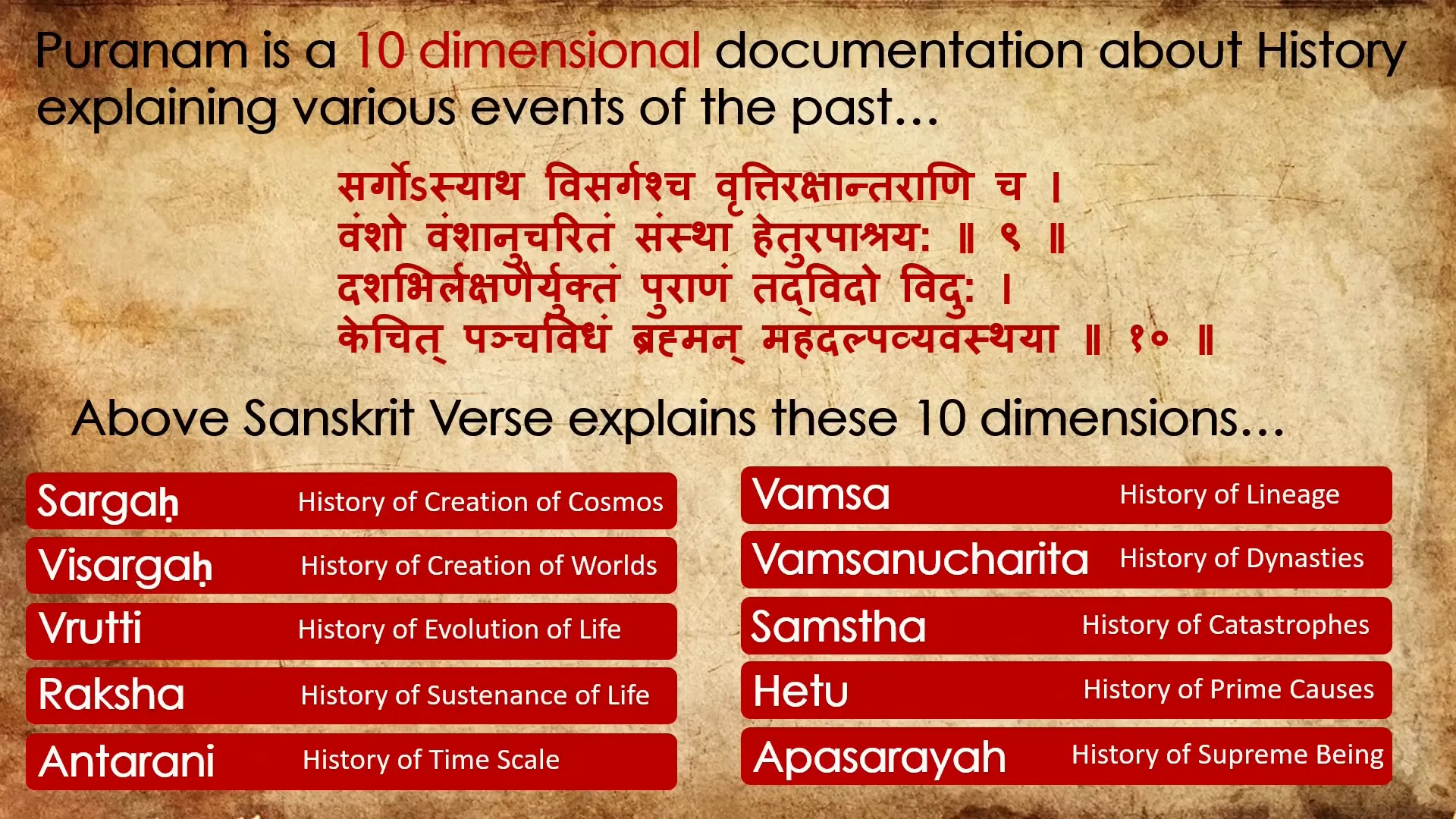
One notable example is the Aryabhatiyam by Aryabhatta, which discusses the heliocentric model and offers methods for calculating eclipses. His work demonstrates a sophisticated understanding of mathematics and astronomy that was far ahead of its time.
In the field of medicine, the Sushruta Samhita outlines surgical techniques and medical practices, showcasing the advanced knowledge in anatomy and healthcare that existed in ancient India. Similarly, the Charaka Samhita discusses herbal medicine and holistic health practices.
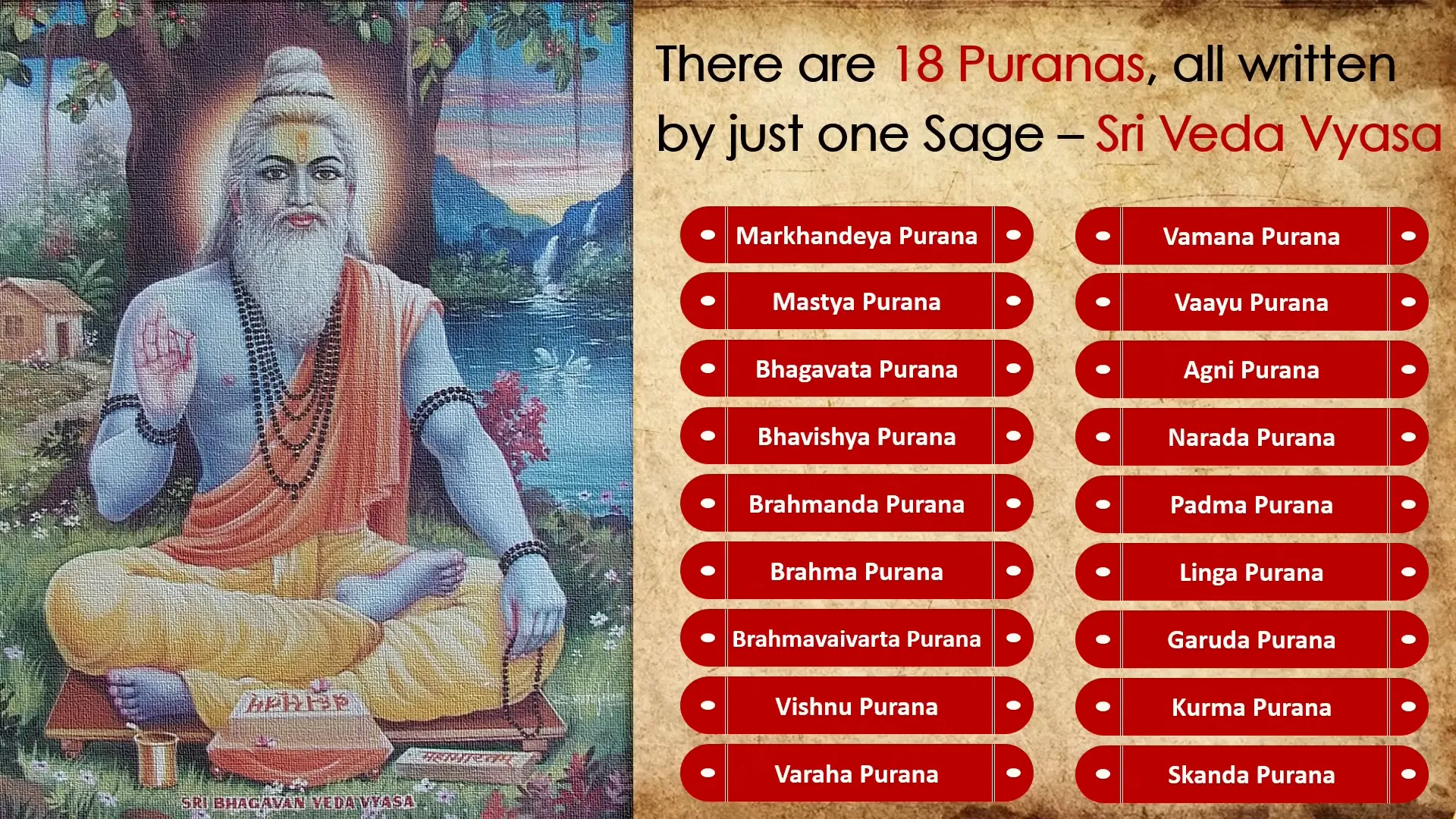
The Importance of Samskritam in Understanding Vedic Knowledge
Samskritam, or Sanskrit, is the language in which most of the ancient Indian scriptures are written. It plays a pivotal role in preserving and conveying Vedic knowledge. The intricate grammar and phonetics of Samskritam allow for precise expression of complex concepts, making it essential for understanding the philosophical and scientific principles embedded in the texts.
Without a solid grasp of Samskritam, much of the profound knowledge contained in the Vedas, Agamas, and Siddhantam remains inaccessible. This language serves as a bridge connecting contemporary scholars with ancient wisdom, enabling deeper insights into the texts.
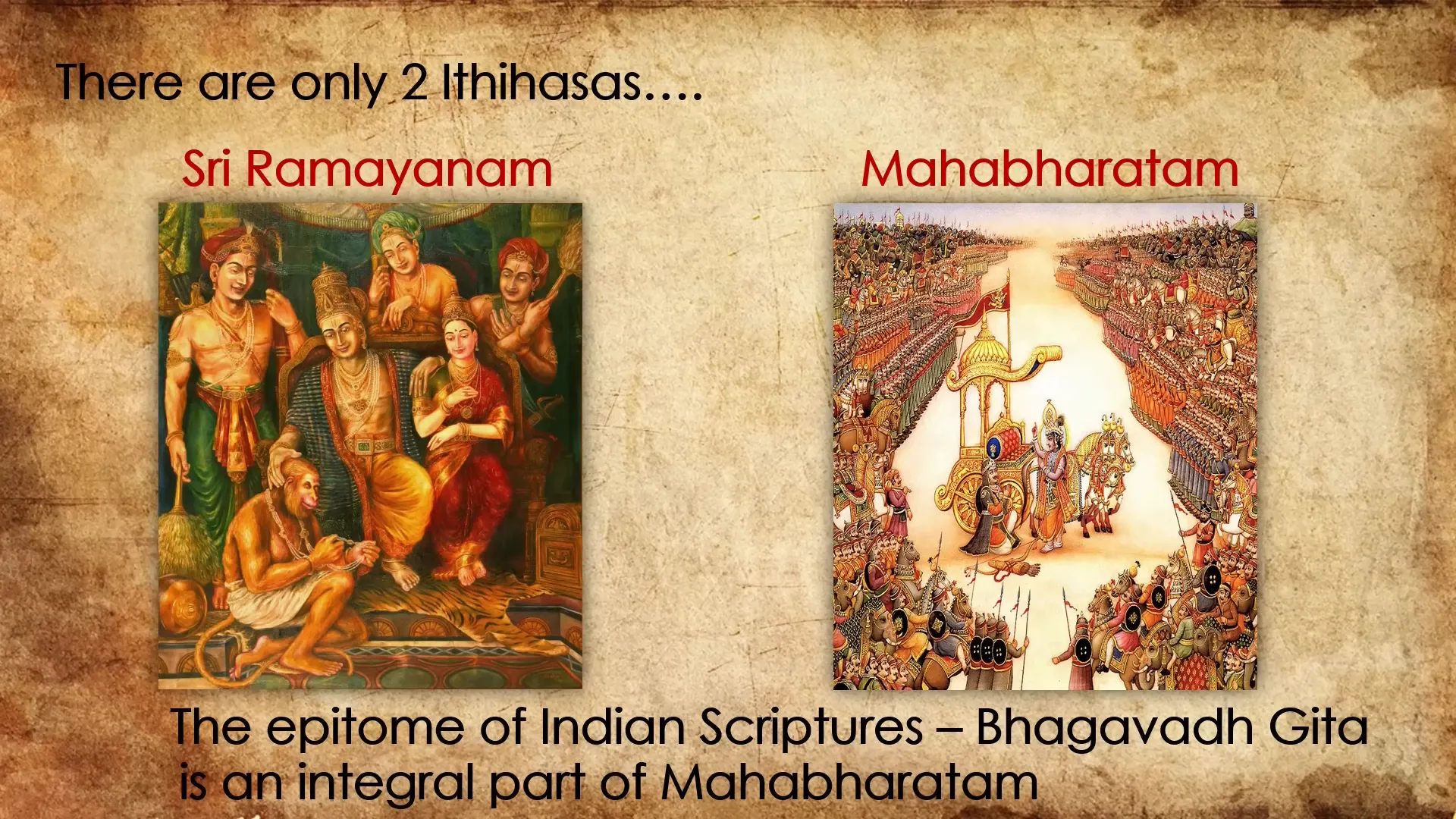
For instance, a simple slokam from the Aryabhatiyam illustrates the relationship between distance, speed, and time. This foundational equation, which underpins kinematics, was articulated in Samskritam long before similar concepts emerged in the Western world. Understanding such texts in their original language reveals layers of meaning that are often lost in translation.
Moreover, the revival of Samskritam in modern education can facilitate a resurgence of interest in ancient sciences and philosophies, encouraging new generations to explore their cultural heritage.
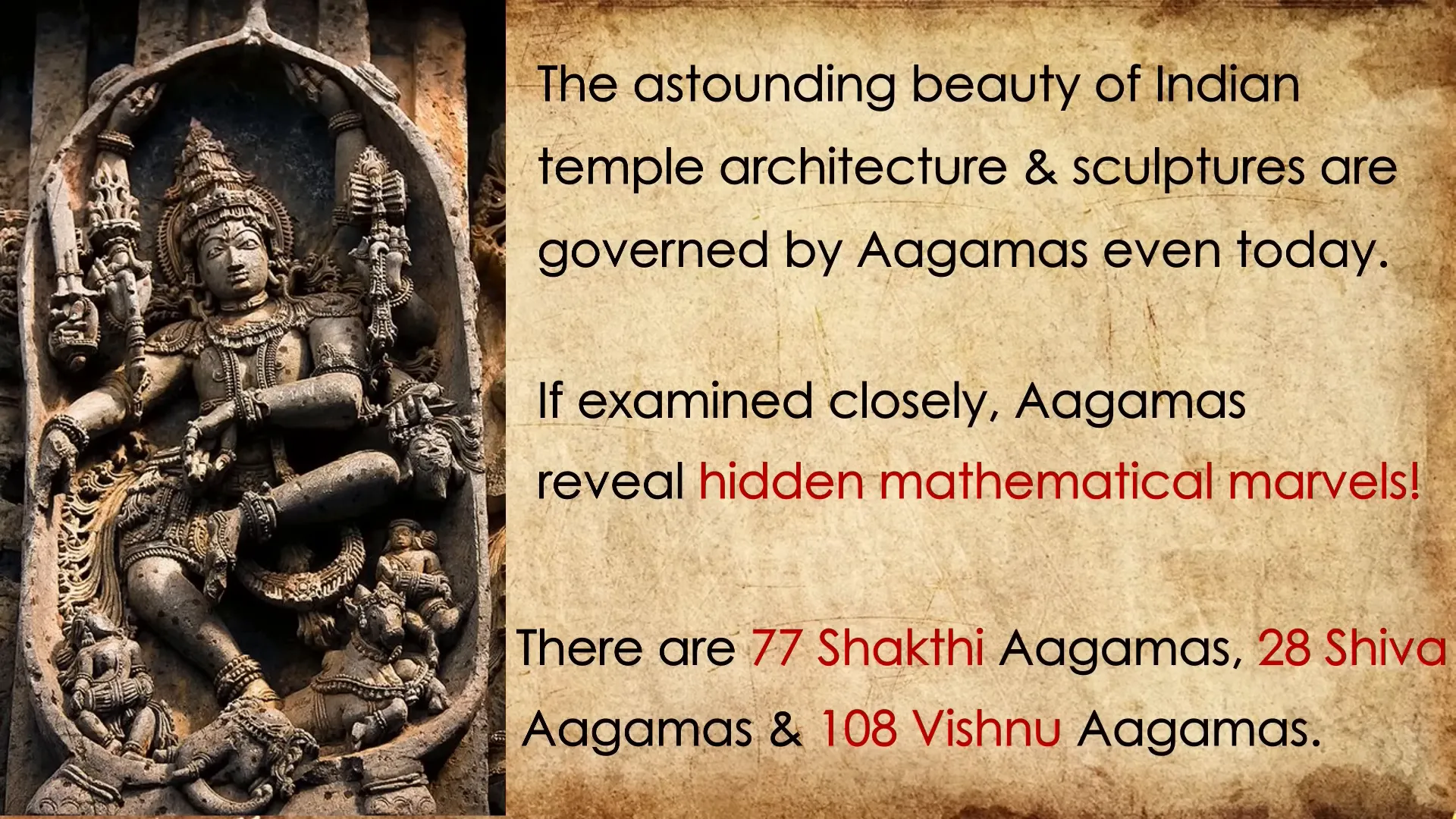
The Legacy of Aryabhatta and His Contributions
Aryabhatta, one of the most celebrated mathematicians and astronomers of ancient India, made significant contributions that laid the foundation for various scientific disciplines. His work transcended geographical boundaries and time, influencing scholars across the world.
Aryabhatta is often credited with the introduction of the concept of zero and the decimal system, which revolutionized mathematics. His seminal work, the Aryabhatiyam, covers topics ranging from arithmetic to algebra and geometry.

In astronomy, Aryabhatta proposed that the Earth rotates on its axis, a concept that contradicts the geocentric model prevalent at the time. He also developed methods for calculating the circumference of the Earth with remarkable accuracy.
His insights into trigonometry and the calculation of sine values were groundbreaking, laying the groundwork for future developments in mathematics. The principles he articulated in his texts continue to be relevant in contemporary scientific discourse.
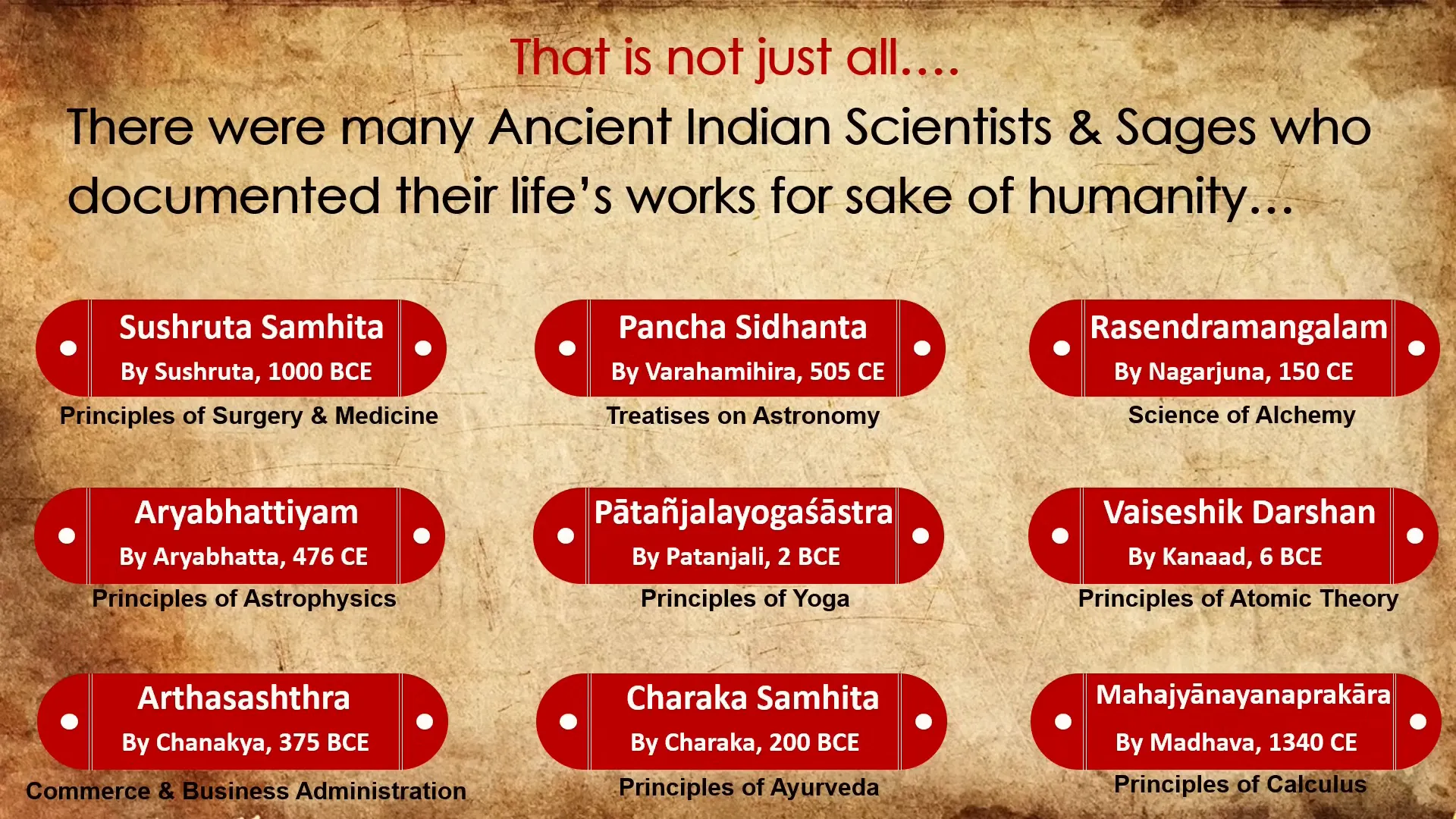
Conclusion: The Need to Rediscover Ancient Indian Knowledge
The ancient Indian education system, with its rich tapestry of knowledge and wisdom, remains a treasure trove waiting to be explored. The comprehensive understanding of science, technology, philosophy, and spirituality encapsulated in the Vedas, Agamas, Siddhantam, and other scriptures is relevant even today.
As we face modern challenges, revisiting these ancient texts can provide innovative solutions and perspectives. The revival of interest in Samskritam and the principles laid out in these scriptures can inspire future generations to engage with their cultural heritage and contribute to global knowledge.
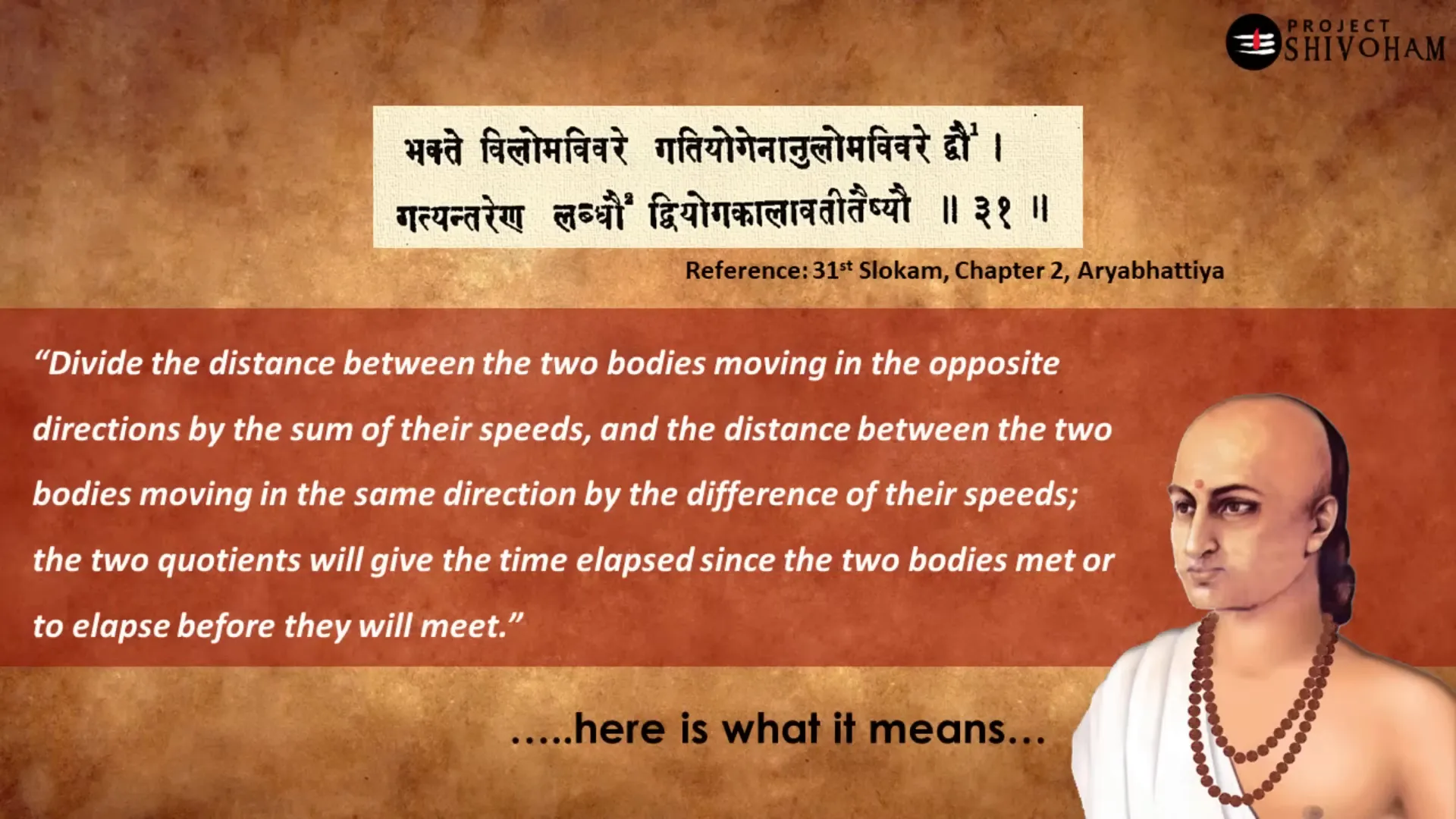
Frequently Asked Questions
What are Agamas?
Agamas are ancient texts that provide guidelines for temple construction and rituals. They are essential for understanding the architectural principles and spiritual significance of temples in Indian culture.
Who was Aryabhatta?
Aryabhatta was a renowned mathematician and astronomer from ancient India, known for his contributions to mathematics, astronomy, and the introduction of the concept of zero.
Why is Samskritam important?
Samskritam is crucial for understanding ancient Indian scriptures, as it encapsulates complex concepts in precise language. Mastery of Samskritam allows deeper insights into Vedic knowledge.
How can ancient Indian knowledge be applied today?
Ancient Indian knowledge can offer solutions to modern challenges in various fields such as medicine, architecture, and environmental sustainability. Rediscovering these principles can lead to innovative approaches in contemporary contexts.
Courtesy: Aravind Markandeya @ Project Shivoham